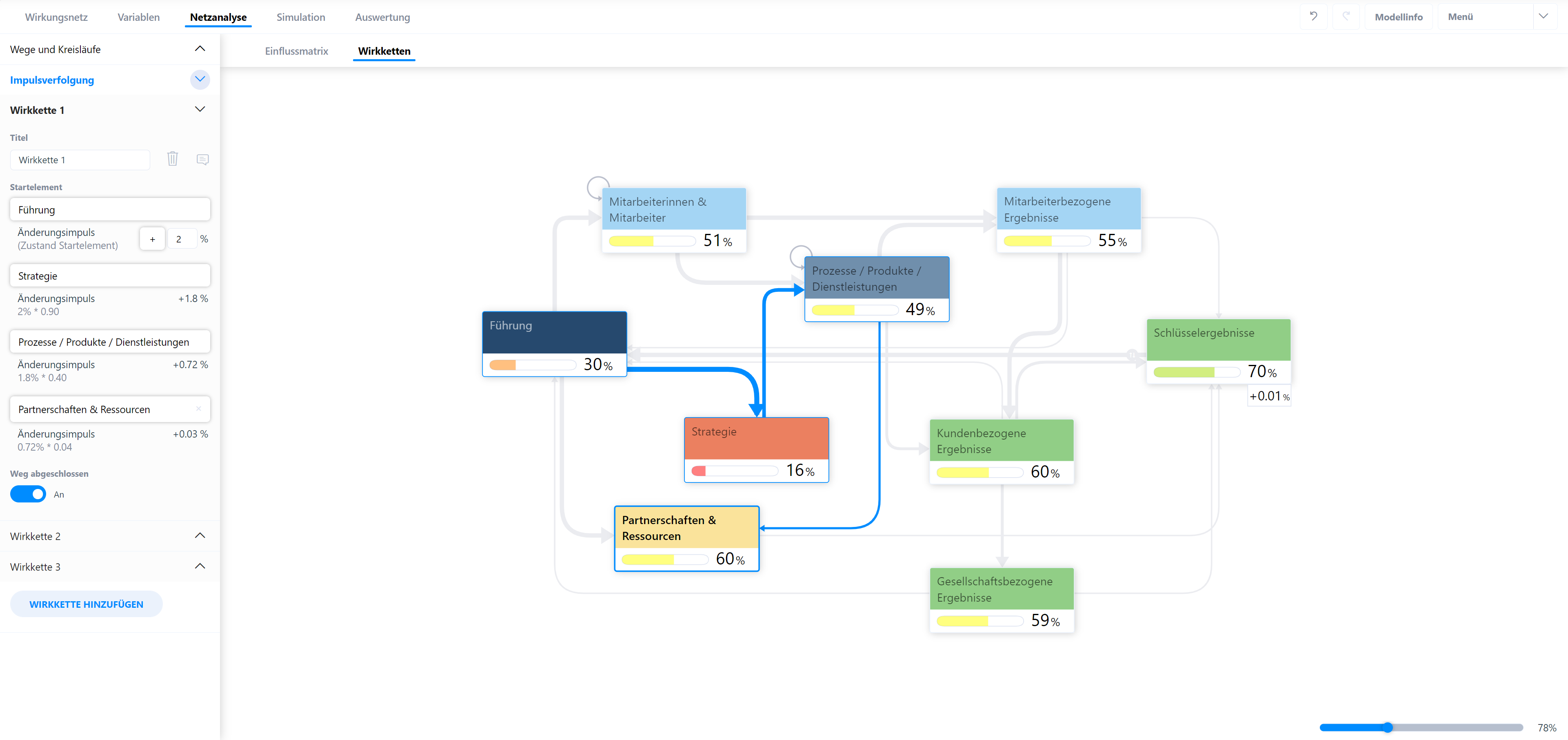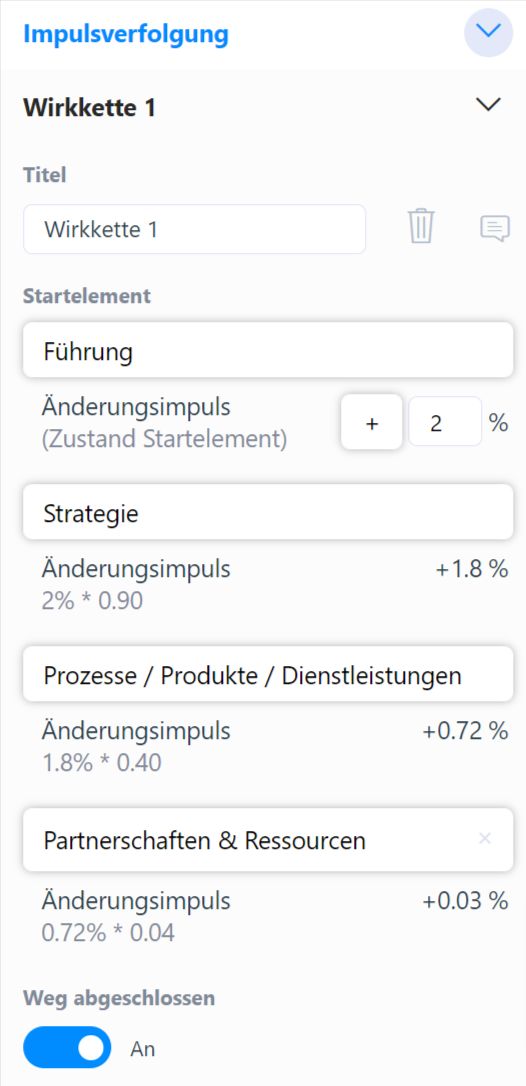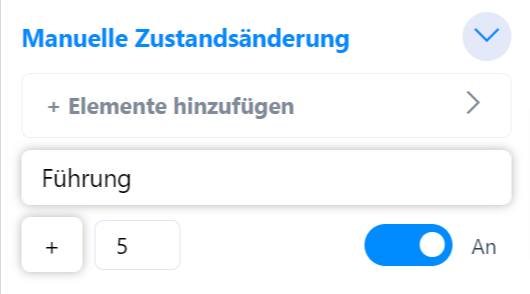Impact Chains
# Ways and Cycles
You can use the function of ways and cycles to identify and analyze influence paths between two elements. To do this, select two elements whose relationship you want to analyze. You can specify the maximum length of the chain of effects to be developed via “Maximum length”. Clicking on a single path automatically lists all elements along the impact chain.
If you select the same element twice, the active circuits of this element are displayed.


# Impulse Tracking






